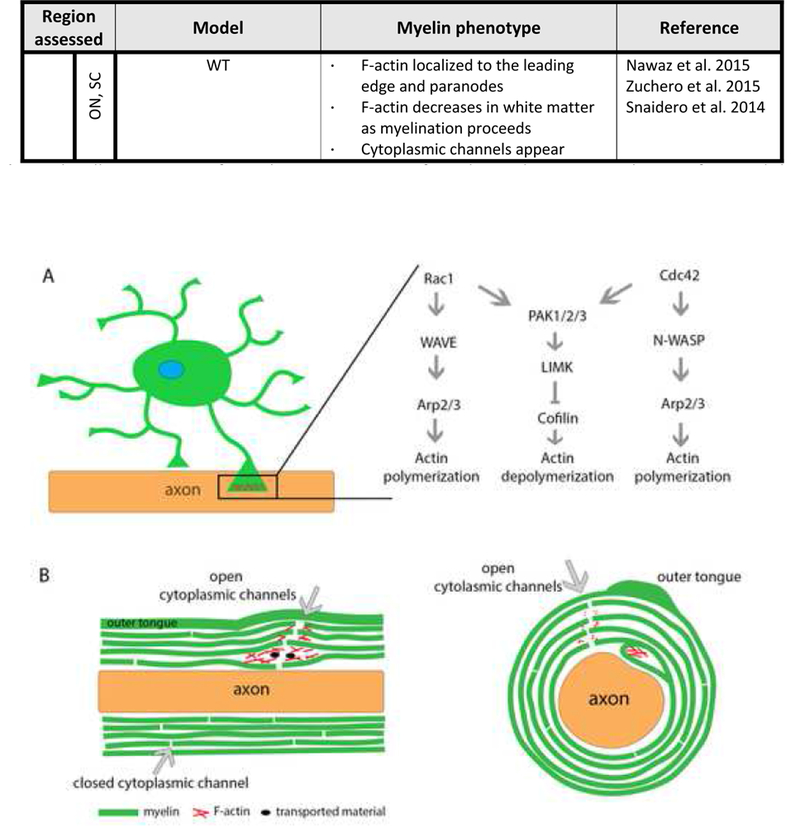Figure 2.

Predicted cytoskeletal signaling pathways at the leading edge of myelinating cells. (A) The leading edge of an OPC process is the cytoplasmic rich expansion that comes into contact with an axon, which then becomes the inner tongue during myelin wrapping. The inner tongue remains in close contact with the axon as it ensheathes the axon and continues to wrap during active myelination. RhoGTPases Rac1 and Cdc42 signal through WAVE or N-WASP and then the Arp2/3 complex to promote actin polymerization. RhoGTPases can also signal through the PAK proteins to phosphorylate LIMK, that then phosphorylates and inactivates cofilin to regulate actin turnover. Active (unphosphorylated) cofilin binds to f-actin, induces a local twist in the filament, leading to actin severing. High levels of cofilin bound to f-actin can induce twisting throughout the entire filament, changing cofilin activity to an actin stabilizing protein. (B) Longitudinal view of a myelinated axon with areas of open cytoplasmic channels that close upon myelin compaction. (C) Cross section of myelinated axon. F-actin localizes to cytoplasmic channels, allowing access from the outer tongue of myelin to the axon-myelin interface and the inner tongue.
